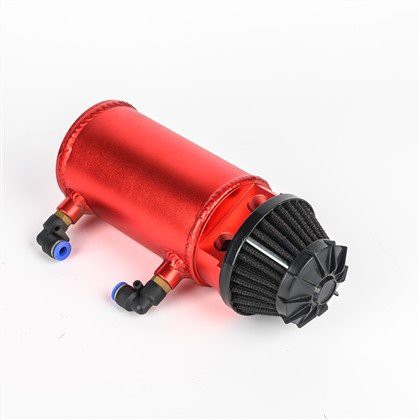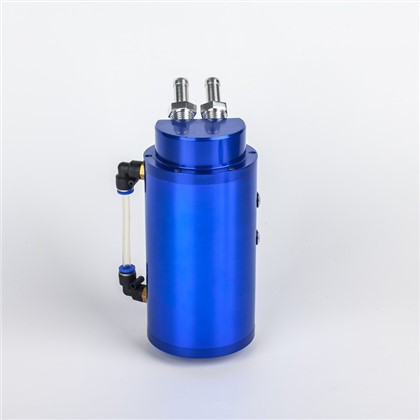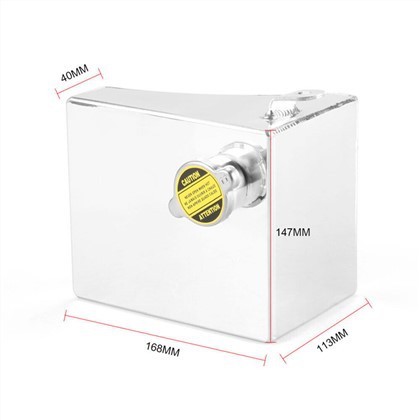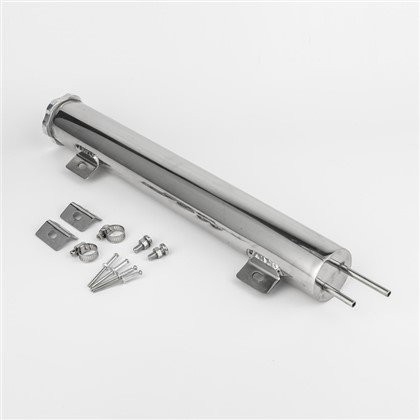What is Cooling System
The cooling system is an essential part of your car's engine. Specialized liquid coolant flows through the cooling system, helping to keep the system at an ideal temperature, both to prevent the system from overheating and to prevent the system from getting too cold in the winter. This coolant has anti-corrosion properties, protecting your engine from fluid damage. It keeps the engine at operating temperature so it can work at peak efficiency, getting the engine to the proper operating temperature as quickly as possible.
Benefits of Cooling System
Improved cooling efficiency
Cooling system components, such as radiators, cooling fans, and water pumps, can improve cooling efficiency. High-performance radiators feature improved core designs and materials that improve heat dissipation, resulting in better cooling performance even in demanding conditions.
Enhanced engine performance
Cooling systems help improve engine performance. By maintaining optimum engine temperature, the cooling system helps prevent overheating, which can negatively affect engine performance. Lower engine temperatures can increase power output, improve fuel efficiency, and reduce the risk of engine knock or pre-ignition.
Improved cooling system durability
Cooling system components can improve their durability and lifespan. For example, high-quality aftermarket radiators are often built with premium materials and workmanship, making them more corrosion-resistant and leak-proof than original radiators. Cooling fans and water pumps are also designed to withstand higher temperatures and continuous use, ensuring long-lasting performance.
Customization for specific needs
Cooling systems can be customized to meet specific needs and requirements. For example, if you frequently drive in hot climates or engage in performance-oriented driving, you can choose cooling system components with higher cooling capacity to ensure optimal temperature regulation.
Support for increased power or engine modifications
If you have modified your vehicle's engine, such as increasing power output or installing a forced air induction system, the cooling system becomes even more important. Higher engine power typically generates more heat, placing additional demands on the cooling system.
-
Aluminum Single Pass Heat Sink Cooler
100% Brand New. Made from satin aluminum. 100% high quality.. Single pass design, 12 length.. OD of Add to Inquiry -
Braided Oil Fuel Hose Line Kit
Inner hose Material: CPE Synthetic material hose. Maximized Resistance to Heat, Corrosion and Add to Inquiry -
10L Aluminium Fuel Surge Tank
* Fit: Universal Fit For All Vehicles. * Internal Foam. * Integrated sensor. * Materials: Alloy Add to Inquiry -
Fuel Cell Tank
Inlet & Outlet Size: 10AN Male Fitting. Fuel Cell Tank Measurements: 420mm X 420mm X 23mm. Safety Add to Inquiry -
Dual Pass Heat Sink Cooler
--Made from satin aluminum. 100% high quality.. --Dual pass design, 18length.. --2 Holes on one Add to Inquiry -
Square Oil Catch Tank
• Light-Weight Filter Tank Design for Racing Applications. • T-6061 Light-Weight Aluminum Add to Inquiry -
Aluminum Coolant Reservoir Tank
· Made with High Quality Aluminum for Enhanced Strength and Durability. · 6 Height x 3.875 Wide Add to Inquiry -
Oil Catch Reservoir Tank
• 100% Brand New. • Color: BLUE. • Made Of Light Weight High Quality Aluminum.. • Catch Excess Oil Add to Inquiry -
Aluminum Radiator Coolant Overflow Tank
Volume: 1.2 Liters. Material: High Quality Light Weight Aluminium Alloy. Colour: Silver Black Red. Add to Inquiry -
Stainless Steel OverFlow Tank
Color: shinny Polish, Black. Surface Finish: Polished. Placement on Vehicle: Front. Material: Add to Inquiry -
18 Oz Radiator Overflow Tank
Includes Stainless L Brackets. Center To Center Mounting Tab Length 7.5 Slotted Holes Add to Inquiry -
Black Coated Radiator Coolant Overflow Tank
New Improved Twist-In Cap Design. Size: 2 x 10. Capacity: 1. Pint (16 oz.). Mounting Bracket and Add to Inquiry
Why Choose Us
Fast delivery
Minimum order quantity is 10 pieces per item, mixed items are one package. Fast delivery in 3-7 days if in stock. Check each batch of goods before delivery and provide official inspection report.
Timely response
Our customer service team will receive feedback from customers in time and will reply to any of your inquiries within 24 hours. Even on holidays. Give responsible solutions as soon as possible.
Strict quality control
We strictly implement the product quality system standards of customers, and continuously develop and produce new products to meet customer requirements.
Professional team
Experienced professional team controls each process through reasonable planning and strict management, with advanced technology and equipment.

The cooling system works by constantly passing coolant through channels in the engine block. Coolant, driven by a water pump, is pushed through the cylinder block. As the solution passes through these channels, it absorbs heat from the engine.
Leaving the engine, this heated fluid enters the radiator, where it is cooled by the air flow entering through the car’s radiator grill. The fluid will cool as it passes through the radiator, returning to the engine again to pick up more engine heat and carry it away.
There is a thermostat between the radiator and engine. Depending on the temperature, the thermostat regulates what happens to the liquid. If the fluid temperature drops below a certain level, the solution bypasses the radiator and is instead directed back to the engine block. The coolant will continue to circulate until it reaches a certain temperature and opens the valve on the thermostat, allowing it to pass through the radiator again for cooling.
Your car’s make and model might suggest different timetables, but, generally, you should check your car’s coolant system every 30,000–80,000 miles. Using a mechanic for this would be wise. You can check your car’s coolant level regularly; some people do it every time they fill up their tank. Remember that it’s better to check too often than too little, as it’s harder to catch problems when you’re not looking for them.

How to Check the Cooling System
This is the first and most important step. Opening the cooling system on a hot engine can make coolant burst from the radiator, seriously scalding you. Make sure the car has been resting for a while in fact, it's best to check the coolant after the vehicle has been sitting overnight.
Most cars have a cap on top of the radiator, but on some vehicles, the radiator is sealed. In this case, the pressure cap will be on the coolant reservoir. If you’re uncertain, check your owner’s manual to find out where it is.
If the car has a radiator cap, the coolant level should reach the top of the radiator neck. In instances where the car only has a reservoir, the level should reach the “cold full” mark stamped on it. A low coolant level indicates a leak somewhere. In most cases, the system will need to be pressure tested with a special tool to determine the source of the problem. Then it can be repaired.
No matter what color it is, coolant should be translucent and free of contamination. If not, there’s a problem. Coolant that’s rusty or has things floating in it is extremely dirty. In this case, at a bare minimum, the cooling system will need to be flushed. In extreme instances, components may need to be removed and cleaned or replaced.
Components of The Cooling System
Radiator
At the heart of the cooling system is the radiator, a heat exchanger that plays a central role in dissipating the excess heat generated by the engine. As the coolant circulates through the engine, it absorbs heat and flows into the radiator, where it releases that heat into the air, cooling down before returning to repeat the process.
Coolant
Typically a mixture of water and antifreeze, coolant not only absorbs and transfers heat but also prevents freezing in cold temperatures and protects the engine from corrosion. Regularly checking and maintaining the right coolant levels are crucial for the efficient functioning of the entire system.
Water pump
The water pump ensures a constant flow, preventing hot spots and facilitating the efficient transfer of heat. A malfunctioning water pump can disrupt this flow, leading to overheating, making its regular inspection a vital aspect of cooling system maintenance.
Thermostat
The thermostat acts as the gatekeeper, regulating the flow of coolant based on the engine's temperature. When the engine is cold, it remains closed, allowing it to warm up quickly. As the temperature rises, it opens, enabling the flow of coolant to maintain optimal operating temperatures. A faulty thermostat can disrupt this balance, leading to either overcooling or overheating.
Fan
It kicks in when additional cooling is needed, drawing air through the radiator to enhance the heat dissipation process. Regularly checking the fan's functionality is crucial for preventing potential heat-related issues.
How to replace a Radiator Overflow Tank
Find a mounting point: Before doing anything else, find a mounting point for the radiator overflow tank. This can be on your radiator itself or nearby in the engine bay.
Bolt the mounting brackets to the tank: Then, bolt the supplied mounting brackets to the tank with the hardware included in the kit.
Mark your holes (Optional): If you don't have holes predrilled in your engine bay or on your radiator for a radiator overflow tank, mock up your tank and mark where your holes will be.
Drill your holes (Optional): Then, drill the necessary holes in your engine bay to mount your radiator overflow tank. Then, drill out the mounting tabs on your tank's mounting brackets to match.
Mount your radiator overflow tank: Use the supplied hardware to mount the radiator overflow tank in your designated spot.
Connect the tank to the radiator: Run the extra coolant hose from the top port on your radiator to the bottom of your overflow tank. Be sure to connect the hose to the smaller of the two ports on the overflow tank.
Tighten your hose into place: Tighten your hose into place with the supplied hose clamps to ensure there are no leaks.
What Are the Signs of a Failing Cooling System?
Low fluid level
When the car is completely cooled down, it's easy to check the coolant level in your radiator. If the fluid level is low, then more fluid may just need to be added. Or, it could be a sign of a significant leak or another problem within the cooling system that is worth getting looked at by a professional mechanic.
Poor quality coolant
If you look at your coolant, it should be very bright yellow/green in color and translucent in appearance. If it is dark or full of dirt/rust particles, then that's a sign that there may be an issue somewhere within the cooling system. You may just need to replace the coolant or get a full fluid flush, or there may be a component that is damaged.
Coolant leak
If you notice radiator coolant leaking under your car, that's never a good sign. You'll want to have it inspected by an expert auto repair technician sooner rather than later.
Engine overheating
The biggest sign of a failing cooling system is that the engine is prone to overheating. That means the temperature is not being regulated properly while it's running, and it's likely a problem somewhere in the cooling system. This is not something you want to put off. Get the repairs made before you end up with major internal engine damage.
Engine not starting
This could be an issue with your battery, alternator, ignition or another electrical system. However, a seized up engine can also be the result of a cooling system failure.
Warning lights
You may notice the temperature warning light, check engine light or another specific warning light related to your cooling system. When these lights come on, it's a good time to go get your vehicle inspected as soon as possible.
Check the coolant levels
When your engine is completely cooled down, you can check the radiator fluid levels. Make sure the fluid looks clean and is at the desired fill level. If the fluid is full, but dirty or burnt, then you may want to get your cooling system serviced soon. If the fluid is clean, but low, you can top off the fluid. Just make sure you are using the proper coolant-to-water ratio.
Check for coolant leaks
If you notice radiator coolant leaking underneath your car, or if your fluid level is suspiciously low, it is something to be concerned about. It may just be a minor problem like a weak hose or loose fitting, or it could be something much more significant like a cracked radiator. Get it checked out by an automotive expert as soon as possible if any coolant leaks are evident.
Monitor the temperature gauge
All vehicles make it easy to keep an eye on the running temperature of the engine. If yours is a bit hotter than usual when you are driving, watch the gauge carefully. At the first sign of overheating, pull over and let the engine completely cool down before driving again. If the problem persists, let your mechanic figure out what the problem is. Most modern vehicles have very complex and sensitive cooling system sensors that will let you know of issues early on. Don't ignore the warnings or you may regret it later if things get much worse.
Check the oil level
Though the engine oil isn't necessarily part of the cooling system, it plays a vital role in keeping your engine properly lubricated and running smoothly. You can check your oil level often and get your vehicle serviced at regular intervals to keep it healthy.
Examine the fan and hoses
When the vehicle is completely cooled down, you can perform a basic inspection of the engine fan and cooling system hoses. Look for leaks, cracks or loose fittings. These are plastic and rubber components that can wear down with time, but they will cause problems if damage occurs.
FAQ
We're well-known as one of the leading cooling system manufacturers and suppliers in China. Please feel free to wholesale bulk cheap cooling system in stock here from our factory. All custom made products are with high quality and low price.
Universal Leather Shifter Gear Knob, 14 5 inch steering wheel, brake pedal switch pad











